Cyclovirobuxin D
- CAS NO.:860-79-7
- Empirical Formula: C26H46N2O
- Molecular Weight: 402.66
- MDL number: MFCD00468040
- SAFETY DATA SHEET (SDS)
- Update Date: 2023-06-08 09:01:59

What is Cyclovirobuxin D?
Description
A Buxus alkaloid of the steroidal class, this base has been found in the strong
base fraction of the alkaloidal extract from Buxus microphylla Sieb. et Zucco var.
suffruticosa and B. microphylla Sieb. et Zucco var. suffruticosa Makino forma
major. It is dextrorotatory having a specific rotation of [α]23D + 98° (c 4.40,CHC13)and yields a series of salts and derivatives including the dihydrobromide, m.p.
288-292°C (dec.); dihydriodide, m.p. 276-8°C (dec.); diperchlorate, m.p. 244-
5°C (dec.); dioxalate as an amorphous powder, m.p. 264-7°C (dec.): the N:Ndiacetyl
derivative, m.p. 278-281°C (dec.) with [α]24D + 10° (c 1.94, CHC13)
and the O,N,N-triacetyl derivative, m.p. 246-8°C with [α]24D - 12° (c 2.40,
CHCI3)·
The structure and stereochemistry of the base have been elucidated from
chemical analysis, spectroscopic evidence and comparison with other alkaloids of
this class.
Physical properties
Appearance: colorless needle crystals. Solubility: sparingly soluble in acetone; slightly soluble in water; freely soluble in chloroform; soluble in methanol and ethanol. Melting point: 219–222?°C.
History
Cyclovirobuxine in the treatment of coronary heart disease began in 1969 . The
medical teams of Chinese People’s Liberation Army No.86489 explored a treatment
of coronary heart disease named Guo, prescription composed of Buxus microphylla
(huangyangmu), Salvia miltiorrhiza Bge. (danshen), Ligustici Chuanxiong Rhizoma
(chuanxiong), Belamcandae Rhizoma (shegan), Radix Aristolochiae (qingmuxiang)
and Asari Radix et Rhizoma (xixin).
In 1978, the Anhui Huangyang Research Cooperation Group carried out systematic experiments to determine the chemical structure and the separation and identification method of cyclovirobuxine by melting point determination, thin-layer
chromatography, infrared spectroscopy, mass spectrometry and NMR . Three
studies containing more than 300 cases of coronary heart disease patients treated
with cyclovirobuxine showed that this drug can significantly improve angina, chest
tightness, arrhythmia and other symptoms caused by coronary heart disease.
The Uses of Cyclovirobuxin D
Cyclovirobuxine D is a potential preventative agent of cardiac dysfunction.
What are the applications of Application
Cyclovirobuxine D is an anti-atrial fibrillating agent
Indications
It is mainly used for the treatment of cardiovascular and cerebrovascular diseases in China, such as the coronary heart disease, arrhythmia, cerebral arteriosclerosis, cerebral embolism and brain vascular accident which are caused by insufficiency of cerebral blood supply.
Pharmacology
Pharmacological studies have shown that cyclovirobuxine has a positive inotropic
effect on the heart that may predominantly be due to the inhibition of cardiomyocyte membrane Na+-K+-ATPase activity and promotion of myocardial extracellular
Ca2+ influx and cardiomyocyte Ca2+ release. Moreover, cyclovirobuxine could
markedly reduce myocardial oxygen consumption and increase coronary blood
flow, suggesting that it has definite anti-myocardial ischemia effect. Experiments
also showed that cyclovirobuxine could induce marked inhibition of myocardial
ischemia infarction and enhancement of anoxia tolerance in mice .
Besides, cyclovirobuxine could have protective effect on the acute experimental
cerebral ischemia in mice by bilateral ligation of common carotid arteries, prolong
the life span of mice, increase blood flow and decrease the formation of thrombus
during cerebral ischemia . In vitro experiments have also shown that cyclovirobuxine has neuroprotective effects on neurons and restrains PC12 cells from excitatory amino acid-induced injury .
Clinical Use
After decades of clinical observation, cyclovirobuxine has the therapeutic role of anti-myocardial ischemia and antiarrhythmia and protects against acute cerebral ischemia. In addition, cyclovirobuxine can cross the blood-brain barrier and improve brain microcirculation and oxygen supply to treat cerebral arteriosclerosis insufficiency.
References
Nakano, Terao, Tetrahedron Lett., 1035, 1045, (1964)
Brown, Kupchan, J. Amer. Chem. Soc., 86, 4414, 4424 (1964)
Nakano, Terao,J. Chem. Soc., 4512, 4537 (1965)
Nakano, Hasegawa, ibid, 6688 (1965)
Properties of Cyclovirobuxin D
| Melting point: | 220-221 °C (decomp)(Solv: acetone (67-64-1)) |
| Boiling point: | 524.75°C (rough estimate) |
| Density | 0.9815 (rough estimate) |
| refractive index | 1.5300 (estimate) |
| storage temp. | Store at -20°C |
| solubility | Soluble to 20 mg/mL
(49.66 mM) in Ethanol |
| form | cryst. |
| pka | 15.12±0.70(Predicted) |
| color | White |
| CAS DataBase Reference | 860-79-7(CAS DataBase Reference) |
Safety information for Cyclovirobuxin D
Computed Descriptors for Cyclovirobuxin D
New Products
4-Fluorophenylacetic acid 4-Methylphenylacetic acid N-Boc-D-alaninol N-BOC-D/L-ALANINOL Tert-butyl bis(2-chloroethyl)carbamate 3-Morpholino-1-(4-nitrophenyl)-5,6-dihydropyridin- 2(1H)-one Furan-2,5-Dicarboxylic Acid Tropic acid S-2-CHLORO PROPIONIC ACID ETHYL ISOCYANOACETATE 2-Bromo-1,3-Bis(Dimethylamino)Trimethinium Hexafluorophosphate (6-METHYL-[1,3]DITHIOLO[4,5-b]QUINOXALIN-2-ONE INDAZOLE-3-CARBOXYLIC ACID 4-IODO BENZOIC ACID (2-Hydroxyphenyl)acetonitrile 4-Bromopyrazole 5,6-Dimethoxyindanone 2-(Cyanocyclohexyl)acetic acid 4-methoxy-3,5-dinitropyridine 2-aminopropyl benzoate hydrochloride 1-(4-(aminomethyl)benzyl)urea hydrochloride diethyl 2-(2-((tertbutoxycarbonyl)amino) ethyl)malonate tert-butyl 4- (ureidomethyl)benzylcarbamate Ethyl-2-chloro((4-methoxyphenyl)hydrazono)acetateRelated products of tetrahydrofuran
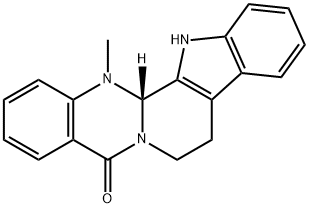
![dipotassium dihydrogen 15alpha-hydroxy-2beta-[[2-O-isovaleryl-3,4-di-O-sulphonato-beta-D-glucopyranosyl]oxy]kaur-16-ene-18,19-dioate](https://img.chemicalbook.in/CAS/GIF/33286-30-5.gif)
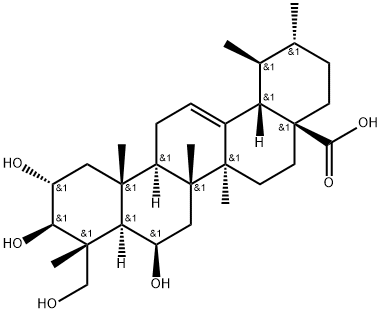
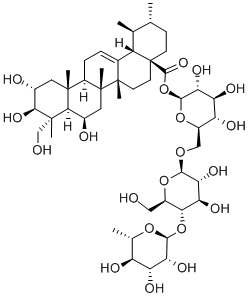
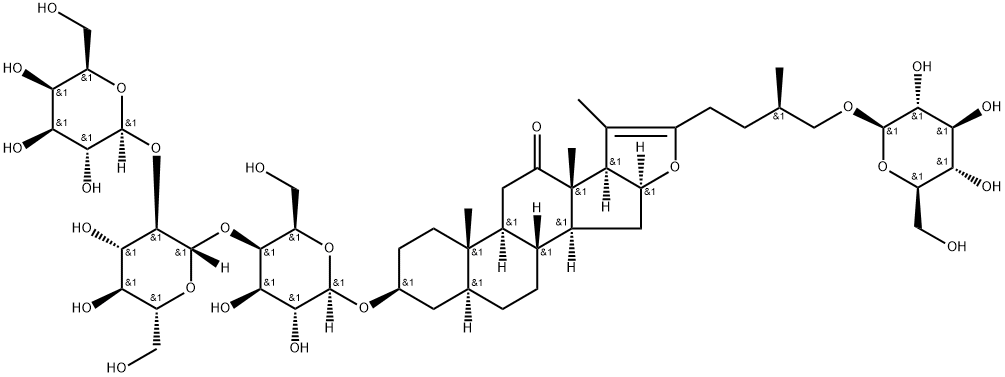

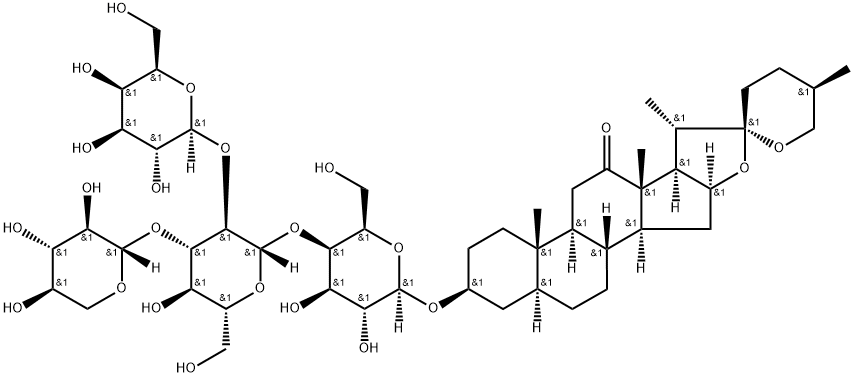
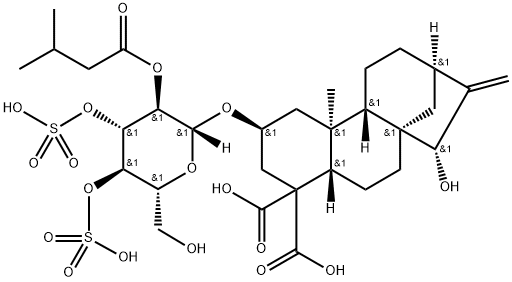
You may like
-
 Cyclovirobuxine D 98% (HPLC) CAS 860-79-7View Details
Cyclovirobuxine D 98% (HPLC) CAS 860-79-7View Details
860-79-7 -
 Cyclovirobuxine D CAS 860-79-7View Details
Cyclovirobuxine D CAS 860-79-7View Details
860-79-7 -
 1975-50-4 98%View Details
1975-50-4 98%View Details
1975-50-4 -
 2-HYDROXY BENZYL ALCOHOL 98%View Details
2-HYDROXY BENZYL ALCOHOL 98%View Details
90-01-7 -
 2-Chloro-1,3-Bis(Dimethylamino)Trimethinium Hexafluorophosphate 221615-75-4 98%View Details
2-Chloro-1,3-Bis(Dimethylamino)Trimethinium Hexafluorophosphate 221615-75-4 98%View Details
221615-75-4 -
 61397-56-6 CIS BROMO BENZOATE 98%View Details
61397-56-6 CIS BROMO BENZOATE 98%View Details
61397-56-6 -
 14714-50-2 (2-Hydroxyphenyl)acetonitrile 98+View Details
14714-50-2 (2-Hydroxyphenyl)acetonitrile 98+View Details
14714-50-2 -
 118753-70-1 98+View Details
118753-70-1 98+View Details
118753-70-1